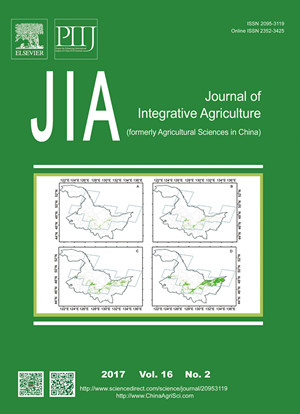|
|
RF-CLASS: A remote-sensing-based flood crop loss assessment cyber-service system for supporting crop statistics and insurance decision-making
Liping Di, Eugene G. Yu, Lingjun Kang, Ranjay Shrestha, BAI Yu-qi
2017, 16(02):
408-423.
DOI: 10.1016/S2095-3119(16)61499-5
Floods often cause significant crop loss in the United States. Timely and objective information on flood-related crop loss, such as flooded acreage and degree of crop damage, is very important for crop monitoring and risk management in agricultural and disaster-related decision-making at many concerned agencies. Currently concerned agencies mostly rely on field surveys to obtain crop loss information and compensate farmers’ loss claim. Such methods are expensive, labor intensive, and time consumptive, especially for a large flood that affects a large geographic area. The results from such methods suffer from inaccuracy, subjectiveness, untimeliness, and lack of reproducibility. Recent studies have demonstrated that Earth observation (EO) data could be used in post-flood crop loss assessment for a large geographic area objectively, timely, accurately, and cost effectively. However, there is no operational decision support system, which employs such EO-based data and algorithms for operational flood-related crop decision-making. This paper describes the development of an EO-based flood crop loss assessment cyber-service system, RF-CLASS, for supporting flood-related crop statistics and insurance decision-making. Based on the service-orientated architecture, RF-CLASS has been implemented with open interoperability specifications to facilitate the interoperability with EO data systems, particularly the National Aeronautics and Space Administration (NASA) Earth Observing System Data and Information System (EOSDIS), for automatically fetching the input data from the data systems. Validated EO algorithms have been implemented as web services in the system to operationally produce a set of flood-related products from EO data, such as flood frequency, flooded acreage, and degree of crop damage, for supporting decision-making in flood statistics and flood crop insurance policy. The system leverages recent advances in the remote sensing-based flood monitoring and assessment, the near-real-time availability of EO data, the service-oriented architecture, geospatial interoperability standards, and the standard-based geospatial web service technology. The prototypical system has automatically generated the flood crop loss products and demonstrated the feasibility of using such products to improve the agricultural decision-making. Evaluation of system by the end-user agencies indicates that significant improvement on flood-related crop decision-making has been achieved with the system.
|
